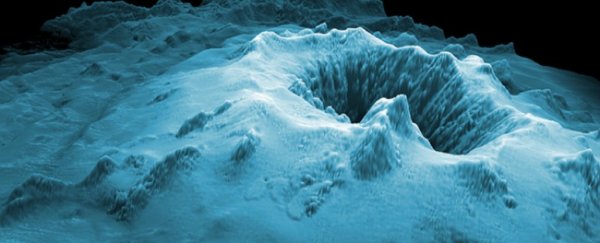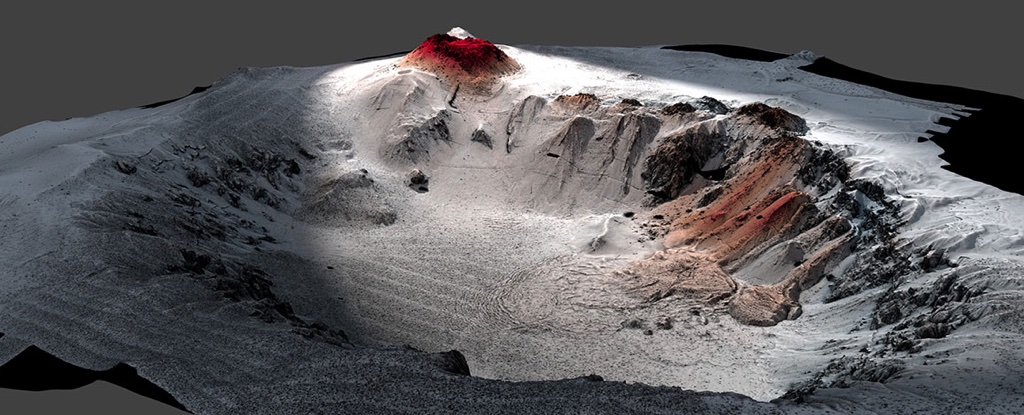We All Nearly Missed The Largest Underwater Volcano Eruption Ever Detected

(Rebecca Carey, University of Tasmania/Adam Soule, WHOI)
NATURE
She was flying home from a holiday in Samoa when she saw it through the airplane window: a "peculiar large mass" floating on the ocean, hundreds of kilometres off the north coast of New Zealand.
The Kiwi passenger emailed photos of the strange ocean slick to scientists, who realized what it was – a raft of floating rock spewed from an underwater volcano, produced in the largest eruption of its kind ever recorded.
"We knew it was a large-scale eruption, approximately equivalent to the biggest eruption we've seen on land in the 20th Century," said volcanologist Rebecca Carey from the University of Tasmania, who co-led the first close-up investigation of the historic 2012 eruption, and together with colleagues finally published the results in a paper in 2018.
The incident, produced by an underwater volcano called the Havre Seamount, initially went unnoticed by scientists, but the floating rock platform it generated was harder to miss.

High-resolution seafloor topography of the Havre caldera (Rebecca Carey, University of Tasmania/Adam Soule, WHOI)
Back in 2012, the raft – composed of pumice, a type of very light, air-filled volcanic rock – covered some 400 square kilometres (154 square miles) of the south-west Pacific Ocean, but months later satellites recorded it dispersing over an area twice the size of New Zealand itself.
Under the surface, the sheer scale of the rocky aftermath took scientists aback when they inspected the site in 2015, at depths as low as 1,220 metres (4,000 feet).
"When we looked at the detailed maps from the AUV [autonomous underwater vehicle], we saw all these bumps on the seafloor and I thought the vehicle's sonar was acting up," said volcanologist Adam Soule from the Woods Hole Oceanographic Institution.
"It turned out that each bump was a giant block of pumice, some of them the size of a van. I had never seen anything like it on the seafloor."
The investigation – conducted with the AUV Sentry and the remotely operated vehicle (ROV) Jason – reveals that Havre Seamount's eruption was more complex than anyone topside ever knew.
The caldera, which spans nearly 4.5 kilometres (about 3 miles), discharged lava from some 14 vents in a "massive rupture of the volcanic edifice", producing not just pumice rock, but ash, lava domes, and seafloor lava flows.
It may have been (thankfully) buried under an ocean of water, but for a sense of scale, think roughly 1.5 times larger than the 1980 eruption of Mount St. Helens – or 10 times the size of the 2010 Eyjafjallajökull eruption in Iceland.
The researchers say that of the material erupted, three-quarters or more floated to the surface and drifted away – tonnes of it washing up onto shorelines an ocean away.
The rest of it was scattered around the nearby seafloor, bringing devastation to the biological communities who called it home, and are only now rebounding.
"The record of this eruption on Havre volcano itself is highly unfaithful," said Carey.
"[I]t preserves a small component of what was actually produced, which is important for how we interpret ancient submarine volcanic successions that are now uplifted and are highly prospective for metals and minerals."
With samples collected by the submersibles yielding what the scientists say could amount to a decade's worth of research, it's a huge, rare opportunity to study what takes place when a volcano erupts under the sea – a phenomenon that actually accounts for more than 70 percent of all volcanism on Earth, even if it's a bit harder to spot.
"Underwater eruptions are fundamentally different than those on land," noted one of the team, geophysicist Michael Manga from UC Berkeley.
"There is no on-land equivalent."
The findings were reported in Science Advances.
No comments:
Post a Comment